It sounds like you want to take two images and create a new image based on some combination of the two images.
There are lots of different ways to go about this. The most straightforward ways involve using Bitmaps. There's two main approaches I can see that are straightforward to accomplish this.
Position your image views how you like within some common parent and create a bitmap of that parent to use as your resulting image.
Create a bitmap yourself by drawing the images of your imageviews based on your own calculations that should mimic the layout structure you have.
Since you already seem to be showing the two images on the screen in the way you want the resulting image to look like, the first is going to be the most straightforward and won't require you to redo the calculations that your layouts and imageviews are already performing.
What we're going to do is take advantage of the fact that every view will draw itself onto a canvas and at the end of the day is just translating itself into an image itself. To get a bitmap of your parent layout you can simply create a bitmap of the same size and then tell your parent layout to draw itself onto a canvas of the bitmap, like so:
private Bitmap getCombinedBitmap(View parentView) {
Bitmap result = Bitmap.createBitmap(parentView.getWidth(), parentView.getHeight(), Bitmap.Config.ARGB_8888);
Canvas canvas = new Canvas(result);
parentView.draw(canvas);
return result;
}
If however you would like to not be bound by just whatever the parent layout is drawing to the screen, you can create the bitmap you want by drawing your images onto a similar canvas. Here I have implemented the first layout from your question:
private Bitmap getCombinedBitmap(Bitmap a, Bitmap b) {
int aWidth = a.getWidth() / 2;
int bWidth = b.getWidth() / 2;
int resultHeight = a.getHeight() < b.getHeight()? a.getHeight() : b.getHeight();
Bitmap result = new Bitmap(aWidth + bWidth, resultHeight, Bitmap.Config.ARGB_8888);
Canvas canvas = new Canvas(result);
Rect aRect = new Rect(0, 0, aWidth, resultHeight);
Rect aResultRect = new Rect(0, 0, aWidth, resultHeight);
canvas.drawBitmap(a, aRect, aResultRect);
Rect bRect = new Rect(0, 0, bWidth, resultHeight);
Rect bResultRect = new Rect(bWidth, 0, bWidth, resultHeight);
canvas.drawBitmap(b, bRect, bResultRect);
return result;
}
In this example I opted for clearer code rather than more optimised code. You can optimise this by not creating as many Rects, etc and generally simplifying your calculations. But you can use this approach to recreate any of your layouts onto a single bitmap, you would just need to change the calculations.
What we are doing is first creating a bitmap that has a width of half the first image plus half the second image, and the height of the smallest of the two images. We then take a section of the first image that is the left most half width wise and as high as the result height wise and we draw that onto our result. We then do the same with the second image except this time the section is the right most half width wise.
Hope this helps.


